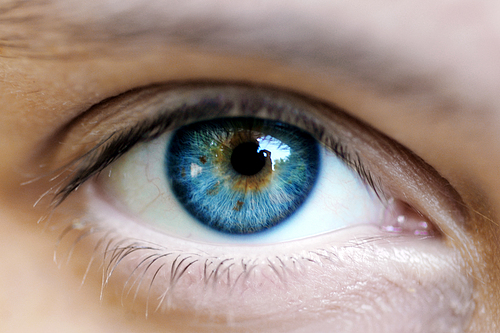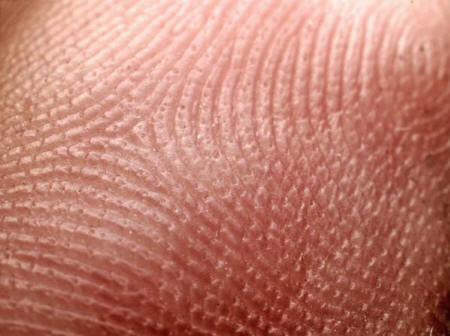|

by Sayer Ji
June 25, 2013
from
GreenMedInfo Website

Increasingly science agrees with
the poetry of direct human experience:
we are more than the atoms and molecules
that make up our bodies,
but beings of light as well.
Biophotons are emitted by the human
body,
can be released through mental
intention,
and may modulate fundamental processes
within
cell-to-cell communication and DNA.
Nothing is more amazing than the highly improbable fact that we
exist.
We often ignore this fact, oblivious to
the reality that instead of something there could be nothing at all,
i.e. why is there a universe (poignantly aware of itself through us)
and not some void completely unconscious of itself?
Consider that from light, air, water, basic minerals within the
crust of the earth, and the at least 3 billion year old information
contained within the nucleus of one diploid zygote cell, the human
body is formed, and within that body a soul capable of at least
trying to comprehend its bodily and spiritual origins.
Given the sheer insanity of our existential condition, and bodily
incarnation as a whole, and considering that our earthly existence
is partially formed from sunlight and requires the continual
consumption of condensed sunlight in the form of food, it may not
sound so farfetched that our body emits light.
Indeed, the human body emits biophotons, also known as ultra-weak
photon emissions (UPE), with a visibility 1,000 times lower than
the sensitivity of our naked eye.
While not visible to us, these particles
of light (or waves, depending on how you are measuring them) are
part of the visible electromagnetic spectrum (380-780 nm) and are
detectable via sophisticated modern instrumentation. [1],[2]
The Physical
and "Mental" Eye Emits Light
The eye itself, which is continually exposed to ambient powerful
photons that pass through various ocular tissues, emit spontaneous
and visible light-induced ultra-weak photon emissions.[3]
It has even been hypothesized that
visible light induces delayed bioluminescence within the exposed eye
tissue, providing an explanation for the origin of the negative
afterimage.[4]
These light emissions have also been correlated with cerebral energy
metabolism and oxidative stress within the mammalian brain.[5]
[6] And yet, biophoton emissions are not necessarily
epiphenomenal.
Bókkon's hypothesis suggests that
photons released from chemical processes within the brain produce
biophysical pictures during visual imagery, and a recent study found
that when subjects actively imagined light in a very dark
environment their intention produced significant increases in
ultra-weak photo emissions.[7]
This is consistent with an emerging view
that biophotons are not solely cellular metabolic by-products, but
rather, because biophoton intensity can be considerably higher
inside cells than outside, it is possible for the mind to access
this energy gradient to create intrinsic biophysical pictures during
visual perception and imagery.[8]

The Human Eye
Emits Light
Our Cells and
DNA Use Biophotons to Store and Communicate Information
Apparently biophotons are used by the cells of many living organisms
to communicate, which facilitates energy/information transfer that
is several orders of magnitude faster than chemical diffusion.
According to a 2010 study,
"Cell to cell communication by
biophotons have been demonstrated in plants, bacteria, animal
neutriophil granulocytes and kidney cells."[9]
Researchers were able to demonstrate
that,
"...different spectral light
stimulation (infrared, red, yellow, blue, green and white) at
one end of the spinal sensory or motor nerve roots resulted in a
significant increase in the biophotonic activity at the other
end."
Researchers interpreted their finding to
suggest that,
"...light stimulation can generate
biophotons that conduct along the neural fibers, probably as
neural communication signals."
Even when we go down to the molecular
level of our genome, DNA can be identified to be a source of
biophoton emissions as well.
One author proposes that DNA is so
biophoton dependent that is has excimer laser-like properties,
enabling it to exist in a stable state far from thermal equilibrium
at threshold.[10]
Technically speaking a biophoton is an elementary particle or
quantum of light of non-thermal origin in the visible and
ultraviolet spectrum emitted from a biological system.
They are generally believed to be
produced as a result of energy metabolism within our cells, or more
formally as a,
"...by-product of biochemical
reactions in which excited molecules are produced from
bioenergetic processes that involves active oxygen species,"
[11]
The Body's
Circadian Biophoton Output
Because the metabolism of the body changes in a circadian fashion,
biophoton emissions also variate along the axis of diurnal time.
[12]
Research has mapped out distinct
anatomical locations within the body where biophoton emissions are
stronger and weaker, depending on the time of the day:
Generally, the fluctuation in photon
counts over the body was lower in the morning than in the
afternoon. The thorax-abdomen region emitted lowest and most
constantly. The upper extremities and the head region emitted
most and increasingly over the day.
Spectral analysis of low,
intermediate and high emission from the superior frontal part of
the right leg, the forehead and the palms in the sensitivity
range of the photomultiplier showed the major spontaneous
emission at 470-570 nm.
The central palm area of hand
emission showed a larger contribution of the 420-470 nm range in
the spectrum of spontaneous emission from the hand in
autumn/winter.
The spectrum of delayed luminescence
from the hand showed major emission in the same range as
spontaneous emission.
The researchers concluded that,
"The spectral data suggest that
measurements might well provide quantitative data on the
individual pattern of peroxidative and anti-oxidative processes
in vivo."
Meditation and
Herbs Affect Biophoton Output
Research has found an oxidative stress-mediated difference in
biophoton emission among mediators versus non-meditators.
Those who meditate regularly tend to
have lower ultra-weak photon emission (UPE, biophoton emission),
which is believed to result from the lower level of free radical
reactions occurring in their bodies.
In one clinical study involving
practitioners of transcendental meditation (TM)
researchers found:
The lowest UPE intensities were
observed in two subjects who regularly meditate. Spectral
analysis of human UPE has suggested that ultra-weak emission is
probably, at least in part, a reflection of free radical
reactions in a living system.
It has been documented that various
physiologic and biochemical shifts follow the long-term practice
of meditation and it is inferred that meditation may impact free
radical activity.[13]
Interestingly, an herb well-known for
its use in stress reduction (including inducing measurable declines
in cortisol), and associated heightened oxidative stress, has been
tested clinically in reducing the level of biophotons emitted in
human subjects.
Known as rhodiola, a study published in
2009 in the journal Phytotherapeutic Research found that those who
took the herb for 1 week has a significant decrease in photon
emission in comparison with the placebo group.[14]
Human Skin May
Capture Energy and Information from Sunlight
Perhaps most extraordinary of all is the possibility that our bodily
surface contains cells capable of efficiently trapping the energy
and information from ultraviolet radiation.
A study published in the Journal of
Photochemistry and Photobiology in 1993, titled, "Artificial
sunlight irradiation induces ultraweak photon emission in human skin
fibroblasts," discovered that when light from an artificial sunlight
source was applied to fibroblasts from either normal subjects or
with the condition xeroderma pigmentosum, characterized by deficient
DNA repair mechanisms, it induced far higher emissions of ultra-weak
photons (10-20 times) in the xeroderma pigmentosum group.
The researchers concluded from this
experiment that,
"These data suggest that xeroderma
pigmentosum cells tend to lose the capacity of efficient storage
of ultra-weak photons, indicating the existence of an efficient
intracellular photon trapping system within human cells."[15]
More recent research has also identified
measurable differences in biophoton emission between normal and
melanoma cells.[16]

In a previous article,
Does Skin Pigment Act Like A Natural
Solar-Panel, we explored the role of melanin in
converting ultraviolet light into metabolic energy:
Melanin is capable of transforming
ultraviolet light energy into heat in a process known as
"ultrafast internal conversion"; more than 99.9% of the absorbed
UV radiation is transformed from potentially genotoxic
(DNA-damaging) ultraviolet light into harmless heat.
If melanin can convert light into heat, could it not also
transform UV radiation into other biologically/metabolically
useful forms of energy?
This may not seem so farfetched when
one considers that even gamma radiation, which is highly toxic
to most forms of life, is a source of sustenance for certain
types of fungi and bacteria.
The Body's
Biophoton Outputs are Governed by Solar and Lunar Forces
It appears that modern science is only now coming to recognize the
ability of the human body to receive and emit energy and information
directly from the light given off from the Sun. [17]
There is also a growing realization that the Sun and Moon affect
biophoton emissions through gravitational influences.
Recently, biophoton emissions from wheat
seedlings in Germany and Brazil were found to be synchronized
transcontinentally according to rhythms associated with the
lunisolar tide.[18]
In fact, the lunisolar tidal force, to
which the Sun contributes 30% and the Moon 60% of the combined
gravitational acceleration, has been found to regulate a number of
features of plant growth upon Earth.[19]
Intention Is a
Living Force of Physiology
Even human intention itself, the so-called ghost in the machine, may
have an empirical basis in biophotons.
A recent commentary published in the journal Investigacion
clinica titled "Evidence
about the power of intention" addressed this connection:
Intention is defined as a directed
thought to perform a determined action.
Thoughts targeted to an end can
affect inanimate objects and practically all living things from
unicellular organisms to human beings. The emission of light
particles (biophotons) seems to be the mechanism through which
an intention produces its effects.
All living organisms emit a constant
current of photons as a mean to direct instantaneous nonlocal
signals from one part of the body to another and to the outside
world. Biophotons are stored in the intracellular DNA. When the
organism is sick changes in biophotons emissions are produced.
Direct intention manifests itself as
an electric and magnetic energy producing an ordered flux of
photons. Our intentions seem to operate as highly coherent
frequencies capable of changing the molecular structure of
matter.
For the intention to be effective it
is necessary to choose the appropriate time. In fact, living
beings are mutually synchronized and to the earth and its
constant changes of magnetic energy. It has been shown that the
energy of thought can also alter the environment.
Hypnosis, stigmata phenomena and the
placebo effect can also be considered as types of intention, as
instructions to the brain during a particular state of
consciousness. Cases of spontaneous cures or of remote healing
of extremely ill patients represent instances of an exceedingly
great intention to control diseases menacing our lives.
The intention to heal as well as the
beliefs of the sick person on the efficacy of the healing
influences promote his healing.
In conclusion, studies on thought
and consciousness are emerging as fundamental aspects and not as
mere epiphenomena that are rapidly leading to a profound change
in the paradigms of Biology and Medicine.
So there you have it.
Science increasingly agrees with direct
human experience: we are more than the atoms and molecules of which
we are composed, but beings that emit, communicate with, and are
formed from light.
Resources
-
Herbert Schwabl, Herbert
Klima.
Spontaneous ultraweak photon emission from biological
systems and the endogenous light field. Forsch
Komplementarmed Klass Naturheilkd. 2005 Apr;12(2):84-9. PMID:
15947466
-
Hugo J Niggli, Salvatore
Tudisco, Giuseppe Privitera, Lee Ann Applegate, Agata
Scordino, Franco Musumeci.
Laser-ultraviolet-A-induced ultraweak photon emission in
mammalian cells. J Biomed Opt. 2005
Mar-Apr;10(2):024006. PMID:
15910080
-
Chao Wang, István Bókkon,
Jiapei Dai, István Antal.
Spontaneous and visible light-induced ultraweak photon
emission from rat eyes. Brain Res. 2011 Jan 19
;1369:1-9. Epub 2010 Oct 26. PMID:
21034725
-
I Bókkon, R L P Vimal, C
Wang, J Dai, V Salari, F Grass, I Antal.
Visible light induced ocular delayed bioluminescence as a
possible origin of negative afterimage. J
Photochem Photobiol B. 2011 May 3 ;103(2):192-9. Epub 2011
Mar 23. PMID:
21463953
-
M Kobayashi, M Takeda, T
Sato, Y Yamazaki, K Kaneko, K Ito, H Kato, H Inaba.
In vivo imaging of spontaneous ultraweak photon emission
from a rat's brain correlated with cerebral energy
metabolism and oxidative stress. Neurosci Res.
1999 Jul;34(2):103-13. PMID:
10498336
-
Y Kataoka, Y Cui, A
Yamagata, M Niigaki, T Hirohata, N Oishi, Y Watanabe.
Activity-dependent neural tissue oxidation emits intrinsic
ultraweak photons. Biochem Biophys Res Commun.
2001 Jul 27;285(4):1007-11. PMID:
11467852
-
B T Dotta, K S Saroka, M A
Persinger.
Increased photon emission from the head while imagining
light in the dark is correlated with changes in
electroencephalographic power: support for Bókkon's
biophoton hypothesis. Neurosci Lett. 2012 Apr 4
;513(2):151-4. Epub 2012 Feb 17. PMID:
22343311
-
I Bókkon, V Salari, J A
Tuszynski, I Antal.
Estimation of the number of biophotons involved in the
visual perception of a single-object image: biophoton
intensity can be considerably higher inside cells than
outside. J Photochem Photobiol B. 2010 Sep 2
;100(3):160-6. Epub 2010 Jun 10. PMID:
20584615
-
Yan Sun, Chao Wang, Jiapei
Dai.
Biophotons as neural communication signals demonstrated by
in situ biophoton autography. Photochem
Photobiol Sci. 2010 Mar ;9(3):315-22. Epub 2010 Jan 21. PMID:
20221457
-
F A Popp, W Nagl, K H Li,
W Scholz, O Weingärtner, R Wolf.
Biophoton emission. New evidence for coherence and DNA as
source. Cell Biophys. 1984 Mar;6(1):33-52. PMID:
6204761
-
Masaki Kobayashi, Daisuke
Kikuchi, Hitoshi Okamura.
Imaging of ultraweak spontaneous photon emission from human
body displaying diurnal rhythm. PLoS One.
2009;4(7):e6256. Epub 2009 Jul 16. PMID:
19606225
-
Masaki Kobayashi, Daisuke
Kikuchi, Hitoshi Okamura.
Imaging of ultraweak spontaneous photon emission from human
body displaying diurnal rhythm. PLoS One.
2009;4(7):e6256. Epub 2009 Jul 16. PMID:
19606225
-
Eduard P A Van Wijk, Heike
Koch, Saskia Bosman, Roeland Van Wijk.
Anatomic characterization of human ultra-weak photon
emission in practitioners of transcendental meditation(TM)
and control subjects. J Altern Complement Med.
2006 Jan-Feb;12(1):31-8. PMID:
16494566
-
F W G Schutgens, P Neogi,
E P A van Wijk, R van Wijk, G Wikman, F A C Wiegant.
The influence of adaptogens on ultraweak biophoton emission:
a pilot-experiment. Phytother Res. 2009
Aug;23(8):1103-8. PMID:
19170145
-
H J Niggli.
Artificial sunlight irradiation induces ultraweak photon
emission in human skin fibroblasts. J Photochem
Photobiol B. 1993 May;18(2-3):281-5. PMID:
8350193
-
Hugo J Niggli, Salvatore
Tudisco, Giuseppe Privitera, Lee Ann Applegate, Agata
Scordino, Franco Musumeci.
Laser-ultraviolet-A-induced ultraweak photon emission in
mammalian cells. J Biomed Opt. 2005
Mar-Apr;10(2):024006. PMID:
15910080
-
Janusz Slawinski.
Photon emission from perturbed and dying organisms:
biomedical perspectives. Forsch Komplementarmed
Klass Naturheilkd. 2005 Apr;12(2):90-5. PMID:
15947467
-
Cristiano M Gallep, Thiago
A Moraes, Samuel R Dos Santos, Peter W Barlow.
Coincidence of biophoton emission by wheat seedlings during
simultaneous, transcontinental germination tests.
Protoplasma. 2013 Jun ;250(3):793-6. Epub 2012 Sep 26. PMID:
23011402
-
Peter W Barlow, Joachim
Fisahn.
Lunisolar tidal force and the growth of plant roots, and
some other of its effects on plant movements.
Ann Bot. 2012 Jul ;110(2):301-18. Epub 2012 Mar 20. PMID:
22437666
|




